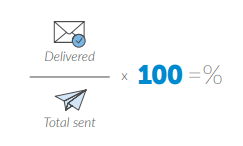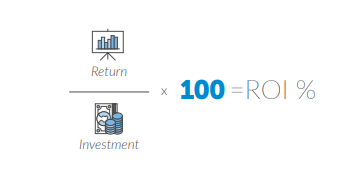
Want to get more out your SMS campaigns? To optimise your SMS marketing efforts you need to closely track key metrics and measure success. Find out the key SMS marketing metrics and how to calculate them below.
To manage successful SMS marketing campaigns, you need to ensure you’re compliant with legal rules and regulations, use a healthy and engaged subscriber list, and try different strategies to personalize your text messages and get responses.
But beyond this, there are a number of metrics and KPIs that you should be measuring to track success, optimize your campaigns and see an improved ROI. The most important SMS marketing metrics to know include:
- SMS delivery rate
- SMS click-through rate (CTR)
- SMS conversion rate
- SMS unsubscribe rate
- SMS list growth rate
- SMS campaign ROI
Let’s take a look at how you can calculate these and further optimize your SMS campaigns below.
SMS delivery rate
SMS delivery measures the percentage of SMS messages that reach their intended recipients’ mobile devices without any issues. Just as email marketers track successful email delivery rates, an SMS delivery rate is a vital measure for text message marketers.
Conversely, the bounce rate metric measures the percentage of messages that failed to be delivered. By focusing on SMS delivery, you can ensure that your messages effectively reach your target audience and maximize the impact of your mobile marketing efforts.
You’ve worked hard to grow your subscriber base, and if your text messages aren’t getting through, you’re not going to maximize your acquisition efforts. If subscribers don’t get your text messages, there’s no way they can convert from SMS, which in turn also impacts your program’s ROI.
Knowing your SMS deliverability rate helps you to identify areas for improvement and ensures you don’t waste resources on SMS marketing that isn’t proving effective.
How do you calculate it?
To calculate your SMS delivery rate, simply divide the number of delivered texts by the total texts sent and multiply by 100 for a percentage figure.

How can you optimize it?
Identify and remove numbers that can’t receive SMS – for example landlines
Review common error codes – which may point to a particular carrier issue
Look at the structure of your message and elements such as short links to resolve filtering/blocking issues.
SMS click-through rates
Often the goal of SMS marketing is to get the recipient to click on a link on and buy something. If this is the case, no clicks equates to no sales. SMS click-through rates measures the percentage of your recipients that clicked on a link within your message. Knowing this will help you to identify whether your message and call to action (CTA) addressed your marketing goals effectively.
How do you calculate it?
To calculate CTR, divide the number of click-generating texts by the total texts sent and multiply by 100 for your percentage figure.
How can you optimize it?
A good CTR percentage varies from industry to industry. So prior to launching your campaign you could consider A/B testing to understand the copy and design that works best for your recipients.
SMS conversion rate
Your SMS conversion rate measures how many texts generated your desired action or response. Depending on the goals of your campaign, the outcome could be the number of messages opened, number of clicks, subscriptions, or sales. This metric tells you on a very practical level whether your SMS activity delivered results.
How do you calculate it?
Simply divide the number of conversion-generating texts by the total texts sent and multiply by 100 to understand your conversion rate percentage.

How can you optimize it?
SMS conversion rates vary according to what you’re measuring. If you aren’t seeing the results you’d expect and your conversion rate is low, you may need to adjust your message wording, CTA, or sale offers.
SMS unsubscribe rate
The unsubscribe rate measures the number of recipients who have opted to remove themselves from your list. If the rate is looking high (and some analysis suggests that a healthy unsubscribe rate is less than 1.5%) it could be a sign that your content is being viewed negatively.
How do you calculate it?
To calculate your SMS unsubscribe rate percentage, divide the number of texts generating unsubscribes by the total number of texts sent and multiply by 100.
How can you optimize it?
High SMS unsubscribe rates can be the result of sending too many messages or scheduling them at inappropriate times. Review your campaigns to make sure you are sending the right messages to the right people, at the right time.
SMS list growth rate
Measuring how quickly you expand your database over time also provides another useful metric and can be an indication of a successful marketing strategy. The more relevant people that you have to send personalized marketing messages to, the better your results could be.
How do you calculate it?
To calculate SMS list growth, you need to divide the net change in subscribers over a given period by the total number of subscribers at the beginning of that period and multiply that figure by 100 to determine your percentage.
How can you optimize it?
If your SMS list growth rate is low, it could be time to kickstart some new marketing campaigns and consider branching out to attract a new subscriber segment.
SMS campaign ROI
This is a critical metric and probably one that you’re already keenly aware of. The SMS campaign ROI measures the sales revenue generated from your campaigns compared to the cost of the activity. Knowing your SMS marketing ROI helps you not only to assess your campaign’s cost-effectiveness but to plan your current and future budget.
How do you calculate it?
To calculate SMS campaign ROI, subtract the costs from campaign-generated sales revenue, then divide by the costs and multiply by 100 to convert the result to a percentage.

How can you optimize it?
What counts as a good SMS campaign ROI depends on your objectives, budget, and the business you’re in. If you have a low ROI, it might be useful to look at the other measurement tools to see how you can make campaign improvements that shift the dial.
Benchmark and evaluate for success
To make your SMS KPIs work for you, it’s important that you track them consistently and take steps to generate real improvements. You also need to clearly define your SMS marketing goals, the measurement metrics you’ll use and be prepared to test, re-test, and optimize to get the most benefit from your performance data.
When should you measure key SMS metrics?
With the right SMS provider, it’s easy to continuously monitor the effectiveness of your campaigns and to refine and optimize them.
You’ll be able to see straightaway how many messages have been delivered versus how many have failed and what your overall open rate is.
Remember, failed messages are still charged for, which will hit your ROI, so take every opportunity to cleanse your database, so you only have accurate numbers. You can even employ a phone verification software to help reduce the workload and ensure you’re not wasting valuable marketing dollars.
If you offer a discount code for a flash sale taking place over the weekend, or you’re hosting an event, you might look at how many times the voucher has been redeemed and how many people attended.
All these metrics can be measured over the longer term too, helping you to understand the effectiveness of SMS as a marketing tool on a quarterly, annual, or five-year basis.
